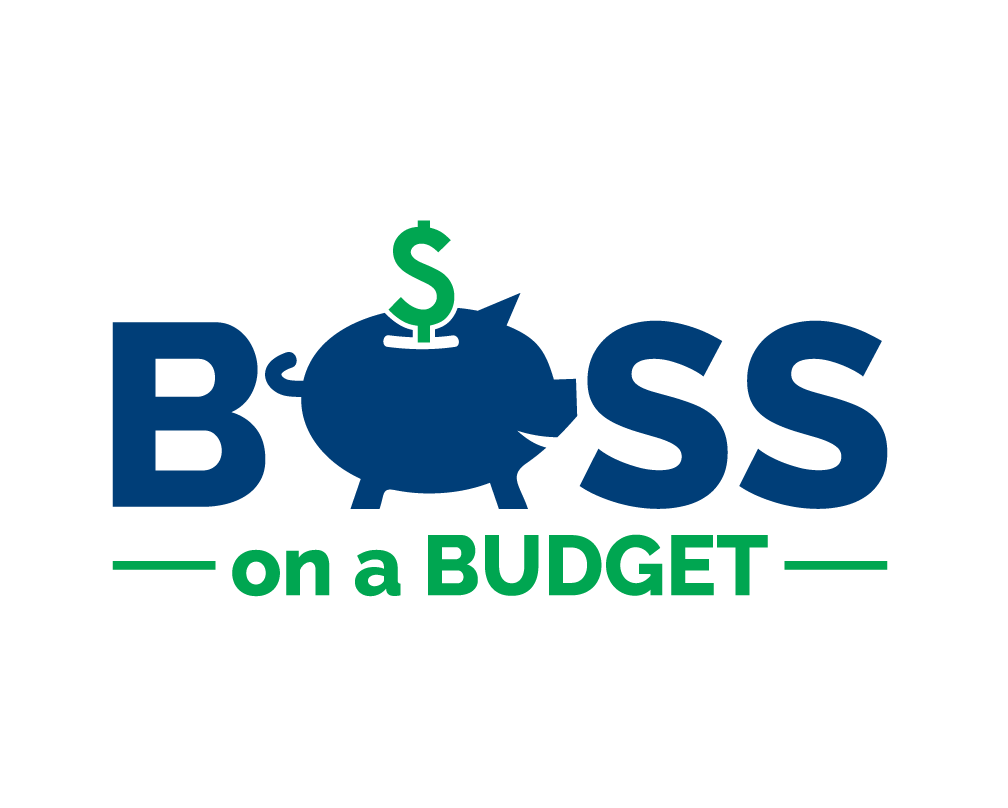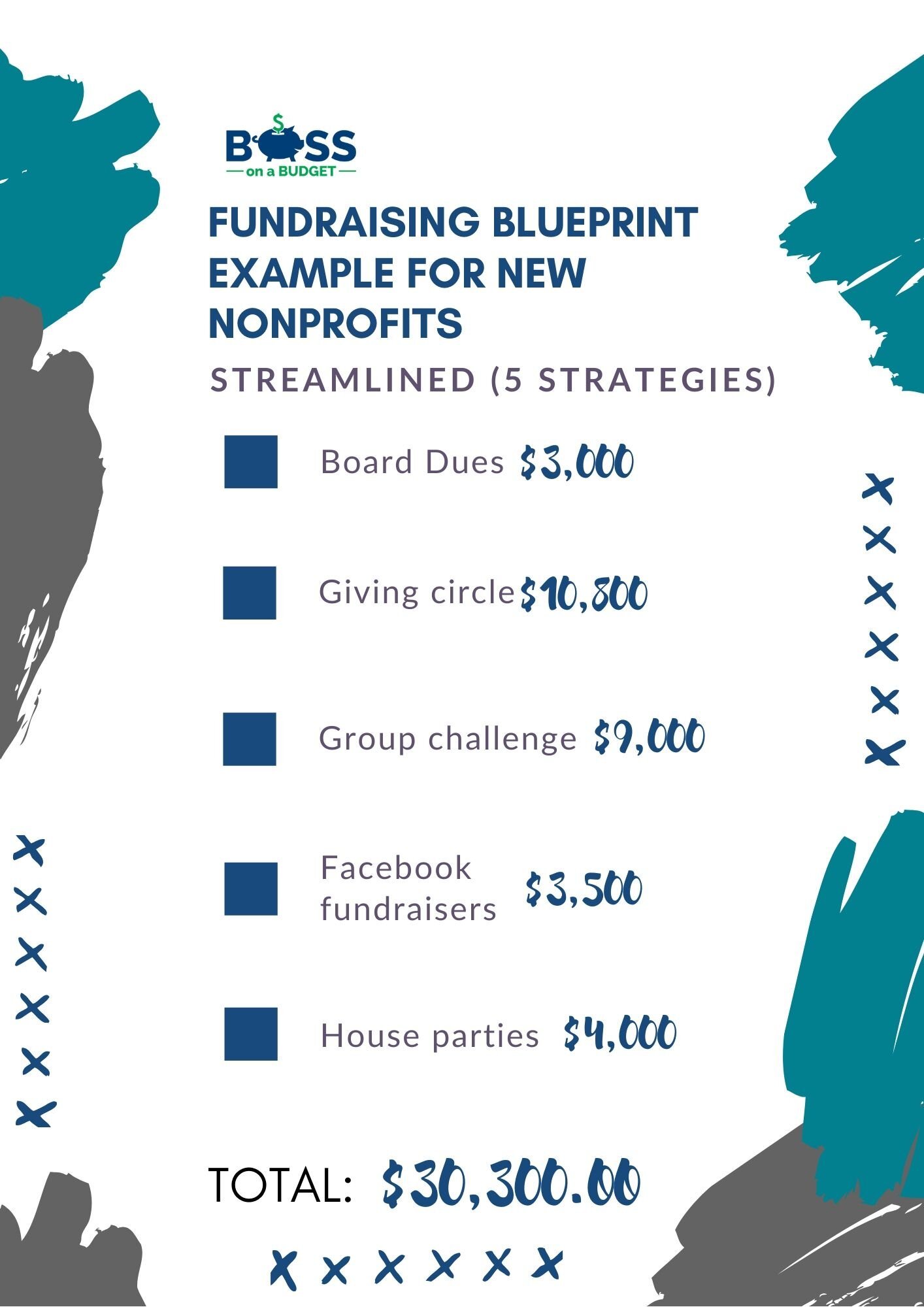21 Easy Ways to Make $30,000 for Your New Nonprofit (with no grants)
*this post may include affiliate links. See the affiliate disclosure policy HERE.
If you’re thinking about starting a nonprofit, one thing that has to be top of mind is how you plan to financially support it. Too many people start out thinking “if I build it, they will come.” 10 points goes to you if you know that reference. The reality is, having a great idea, doesn’t mean people will flock to you. Just because you think you have a worthy cause that people should throw money that does not mean it will happen. It can and will happen with a strong and committed board, hard work, consistency, and a plan.
It’s easy to say what it takes to raise money as a new nonprofit, but I find that many people still struggle with executing. So in this blog post, I will lay out a blueprint you can use for raising money to cover the first year of your nonprofit.
Before we get started, please keep in mind that you can try to do this without a strong infrastructure in place but it’s like shooting yourself in the foot. So make sure you have the following things in place to increase your likelihood of meeting your goals.
You MUST have an engaged board of directors
That board must be clear that they have a role in fundraising for the organization, and that starts with their own giving first. If you don’t have that in place, then you’re not ready. Let them know from the beginning that the weight of the organization does not rest on any one person’s shoulders (especially not the founder’s shoulders), and that it’s everyone’s responsibility to ensure that the organization is financially stable.
Have dedicated volunteers who will help execute fundraisers
Have you ever worked any special event? Ask my sister, i literally turn into “Eventszilla”. It can be the most frustrating, nerve-wracking, anxiety-filled process you experience. This isn’t just with fundraising events, it can be with any kind of fundraiser. Make sure you have a dedicated person in charge of the event and dedicated staff who are responsible for executing action plans to ease the stress and to spread the work around.
Have a plan
Nonprofits with fundraising plans raise more money. If you have a goal, you’re much more likely to reach it. A nonprofit fundraising plan helps you call out what you need to raise, and how you plan to get there. It gives something for your board and your fundraising committee to rally behind and can serve as a sense of motivation and satisfaction once you finally reach your goal.
The following information will help you outline a plan to raise money for your organization, and if done right, can help you raise thousands. From that foundation, you can build and nurture relationships with donors and show your financial viability to donors and future funders.
Please note that I do not mention grants in this article because grants should not be your primary strategy in the beginning. Always start by building individual donor relationships first. However, there are some startup grants you can pursue by reading my blog here.
This blueprint is based mostly on the great work of Kim Klein, who specializes in grassroots fundraising. Many of these strategies I have pulled from her article, 53 ways to raise $500. I highly recommend you check out her books.
These strategies are meant to be realistic and grassroots in nature. Most people in their first year don’t have the resources and all the key contacts to do major fundraising, but they can use these tried and true strategies as building blocks. However, if you feel more equipped to do more ambitious fundraising, then by all means, please do so!
First I will summarize the different fundraising strategies you can use and then customize an example to show you how to create your own plan.
1. Board member dues
Every board member should commit to giving to the organization for the year. In fact, if they cannot give, then they cannot serve. Given the type of organization you are, you may intentionally recruit members with less resources. If that’s the case, you should adjust these amounts to accommodate those persons.
Under normal circumstances, you should ask your board members to pledge an amount that is significant to them and let them declare the amount. But in the startup phase, everyone should understand that an initial investment is key to the success of the organization. For example, if you have 3 board members, you can ask each member to commit $1,000 for the year. That’s around $83/month or $19 a week.
2. Letter writing campaign
Have each board member send a letter to a number of their family and friends asking to contribute to the organization. Each member will send a letter to a number of persons in their network and ask for a set minimum amount. Be sure to include a brochure or one-pager on the organization and a return envelope. After two weeks, have them check on those who haven’t responded and contact them by phone.
3. House parties
Schedule a house party or small event to ask for donations. Invite 10-20 total people and let them know it is a fundraiser. Have the food donated or have someone prepare the food for the dinner. Make a short presentation and supply envelopes for people and/or an online link for follow-up after the dinner to obtain their donations.
4. Host a fancy dinner party
Have a fancy dinner at your home or a dinner at someone's fancy home. Serve unusual or gourmet food, or have special entertainment. Charge $25 or more per person, and have 20 or more guests. Reach out to at least 4 small businesses to be vendors and charge a vendor fee for participating.
5. Raffle fundraiser
Identify 1-3 high priced items that you can raffle off. Only raffle items that are donated to the organization. Examples could include timeshare vacations, electronics, tickets for a show or event, or airline miles. Give a limited amount of time and designate teams to sell raffles. Offer incentives for those who sell the most tickets. Be sure to research gambling laws in your state.
6. Teach a seminar on a topic you know
Tap into the expertise of your organization and charge for people to attend. Charge $10-25 for entry.
7. Start a giving circle
Identify a group of people to join a monthly circle to commit to supporting the organization for 1 year. Ask them to commit the same amount per month. Give them special access to see your programs, or special privileges like shout outs on social media, or have advisory board meetings with them to get their advice.
8. Tap your local businesses
Identify small businesses to donate money to your cause. Be clear about what the money will be used for and provide a presentation about your needs.
9. Tap your local clubs or associations
Identify groups like service clubs, sororities, fraternities rotary clubs, associations who would be interested in your cause. Ask to do a presentation at a meeting and ask for a collection from their members.
10. Garage sales
Ask supporters to conduct garage sales on behalf of the organization and contribute the proceeds from sales. Alternatively, ask for donated items for garage sales, have your own sale, and keep the proceeds.
11. Group challenge
Offer to do something you’ve been putting off and attach a price to it. For example, quit smoking on the condition that your friends donate to your organization, or get your friends to pay a certain amount for every day you don’t smoke for up to 30 days. Agree to match their gifts at the end of thirty days. (This method could be applied to other healthy behaviors, such as exercising, training for a marathon, or not eating sugar).
12. Loose Change
Have a loose change challenge where you ask several people to gather up their loose change for the month and donate it. Provide tubs or containers where they can collect the change and gather them at the end of a certain period (every week or every month). This is a similar fundraiser to bottle drives, where organizations deliver a set of baby bottles to a church or another group and they are responsible for filling the bottle with dollar bills over a certain period of time.
13. Matched giving campaigns
Find out which of your supporters work in corporations with matching gift programs. Ask them to donate and get their gift matched to your organization, and ask them to ask their co-workers to donate and get their gifts matched.
14. Challenge fundraising
Identify a “major donor” who wants to donate an amount and challenge others to donate. Let them know that a major donor will match a designated amount for every dollar that is donated.
15. Charge a fee for services
Determine if any of your organization’s services can be done for a price. If clients can’t afford it, consider a sponsorship campaign where donors will cover the admission costs for each participant.
16. Specific date and amount fundraiser
Select a date and time and encourage supporters to donate to commemorate a memory or another special event.
17: T-shirt fundraiser
Use a service to design a branded T-shirt and sell as a fundraiser. Check out bonfire or Ink to the people. Be mindful of how you frame this to supporters. If you sell the T-shirts outright, you may be responsible for collecting and reporting sales tax in your state. You could also ask for donations and offer the shirt as a gift (but the donor has to deduct the value of the shirt from the donation value).
18: Facebook fundraiser
Ask several supporters to set up their own personal Facebook fundraisers to raise funds for the organization.
19: In kind donations
Ask several businesses if they will donate program items or services for your organization to cover expenses.
20. Host an AirBnB experience in your area
Design a social impact experience for a fee through AirBnb. AirBnB experiences are designed to create experiences for tourists to learn the culture of the area they’re visiting. Design a walking tour or teach a class. Keep in mind that not every city has this service.
21. Start a service raffle
Get a certain number of people to donate a valuable task and raffle it off for a small amount. This could be house painting, gardening, cleaning, or car detailing.
Now let’s turn this into real numbers. Let’s work out a real scenario to help you get to $30,000 in your first year using a combination of these strategies.
Goal $30,000 - Using Several Strategies
Board Dues: You have 3 board members; ask them to contribute $1000 each ($83/month)
Total: $3,000
Letter writing campaign: Gather your board members and ask them to send letters to solicit donations. Ask them to target folks who are out of town who can’t attend your in-person events. Task each board member (assuming we still have 3) to raise $2,000 each. That means 20 people send $100, or 40 people send $50, 80 people send $25, or a combination of any of those.
Total: $6,000
Giving circle: Find 15 individuals who will commit to supporting the organization monthly. Establish them as an advisory board to get feedback on your plans and services. Ask each member to contribute $25 a month.
Total: $4,500
Fancy dinner party: Hold 2 dinner parties throughout the year (one in Spring, one in Fall). Have all the food and items donated. Invite 20 people and ask 4 vendors to vend for a $100 fee. Charge $50 per person. Use 1 of the parties to announce your raffle for 2 high-ticket items you donated (timeshare and brand new TV). Be sure to market the raffle outside of the event as well. Ask for $10 per raffle ticket. Set a goal to sell 150 raffle tickets.
Total: $4,300
T-shirt fundraiser: Design a branded T-shirt and sell to community members. Sell them at a profit of $10 per shirt. Sell 100 shirts.
Total: $1,000
Loose change campaign: Reach out to ten churches to start a loose change campaign. Develop a presentation on your organization and list your needs. Challenge each church to raise at least $1,000 over a period of six months.
Total: $10,000
Reach out to 5 local clubs, associations, or sororities and ask for a donation for your cause. Raise at least $500 from each club.
Total: $2,500
Total raised: $31,300.00
Goal $30,000 - Streamlined (5 strategies)
Board Dues: You have 3 board members; ask them to contribute $1000 each ($83/month)
Total: $3,000
Giving circle: Ask each board member (assuming you have 3 members) to find 12 individuals who will commit to monthly supporting the organization. Establish them as an advisory board to get feedback on your plans and services. Ask each member to contribute $25 a month.
Total: $10,800
Group challenge: Ask 30 people to participate in a 30-day weight loss challenge program. Ask them to gather teams of at least 5 people who are willing to donate an amount per day during the challenge/or an amount per pound lost. For this example, let’s say it’s $2 per day.
Total: $9,000
Facebook fundraisers: Ask 7 people to hold Facebook fundraisers with a goal of $500 each.
Total: $3,500
House parties: Host 4 house parties and solicit for donations from attendees. Make a goal of $1,000 per party.
Total: $4,000
Total raised: $30,300
Now you try. For a streamlined plan, pick 5 fundraising strategies (board dues should be included in any of your strategies). Select total amounts for each fundraising strategy, assign persons to be in charge of each strategy, outline action steps, and get to work!
Please note, there are many different ways you can arrive at your goal. It will depend on your connections, your resources, and your tenacity. You may follow my examples exactly, OR you may take these strategies and customize it to what works for you.
Try it out for yourself and tell me how it goes!





